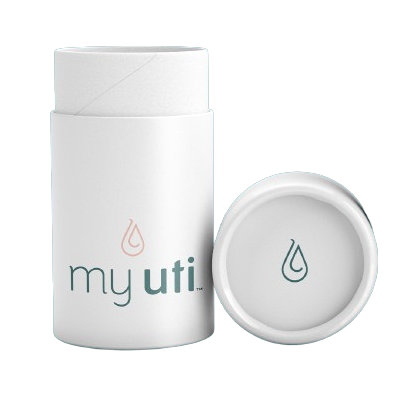UTIs and Your Cycle: Understanding the Connection
Do you find yourself getting a UTI around the same time each month? Have you ever wondered whether your period can cause a UTI? In this blog, we explore the relationship between UTIs and your menstrual cycle - delving into how hormones impact your risk of infection.
Hormones play an important role in UTI risk.
Your menstrual cycle is more than just your period. It’s the hormonal fluctuations over roughly 28 days which impact your body in a multitude of ways. During the first half of your cycle, estrogen is the dominant hormone, rising steadily and peaking when you ovulate. Following ovulation, progesterone becomes dominant in the second half of your cycle as your body prepares for pregnancy. It’s these two key sex hormones that have an invisible impact on your chances of getting a UTI.
How does estrogen impact my chances of getting a UTI?
Recent research reveals that estrogen actually has a protective effect against UTIs. It does this by increasing the acidity of vaginal fluids. This acidity causes your body to become less hospitable for the growth of UTI-causing bacteria, like E. Coli. So, when estrogen levels are peaking during the first half of your cycle, you’re less likely to get a UTI.
What about UTIs and progesterone?
On the other hand, progesterone has a negative impact on your UTI risk. Research suggests progesterone suppresses your immune response. This means you’re more likely to get a UTI or other infection during the second half of your menstrual cycle (when progesterone is dominant) because your body is less able to fight off bacteria.
Can my period cause a UTI?
Your period itself does NOT cause a UTI. Urinary tract infections are caused by bacteria entering the urinary tract. Despite common misconceptions, period blood is not dirty - it won’t give you an infection. However, in some cases, extra moisture down there during your period can make it easier for bacteria to grow and move around.
Can period products give me a UTI?
If you’re susceptible to recurrent UTIs, you may be wondering whether the period products you use are impacting your chances of infection. It’s a common myth that tampons can increase your UTI risk because they’re used internally and offer a safe haven for bacteria. However, there’s no credible evidence to support this claim. Period products are a completely personal choice. Whatever period product you decide to use, make sure to wash your hands before and after changing your product and do so regularly to minimize the chances of bacterial growth.
Can I test for a UTI on my period?
Testing for a UTI requires you to take a urine sample which is then tested for signs of infection. It’s recommended to avoid taking urine samples whilst bleeding because blood can contaminate the sample. However, if you have a UTI and are in desperate need of answers and treatment - using a menstrual cup, disc or tampon can help you get a clean sample.

Recommended

The “Just in Case” Collection Kit
Easily test for a UTI from home at the first sign of symptoms. No need for Urgent Care visits! With the MyUTI “Just in Case” Collection Kit, just order the PCR lab test, send it overnight (included), and get your results by the next day.
View DetailsWait, is it a UTI or my period?
UTI symptoms and period symptoms can have some overlap, making it difficult to know whether you need to seek support. Bloating, pelvic pain, fatigue and frequent urination are all symptoms for both periods and UTIs. During your period, it can be difficult to differentiate between period blood and blood in your urine. Menstrual cramps can also be confused with pelvic pain. However, painful urination is NOT a period symptom and should be taken as a clear sign of infection.
To wrap things up:
In short, you’re less likely to get a UTI during the first half of your menstrual cycle, when estrogen levels are high and your vaginal fluids are more acidic. Your UTI risk is higher during the second half of your cycle, when progesterone suppresses your immune system, making you more susceptible to infection.
It’s important to remember: every person is unique, with different hormone fluctuations and anatomy. So, understanding your own body is key to recognising and managing your UTI risk. For more information on women’s health and UTIs, check out the MyUTI Education Center.
